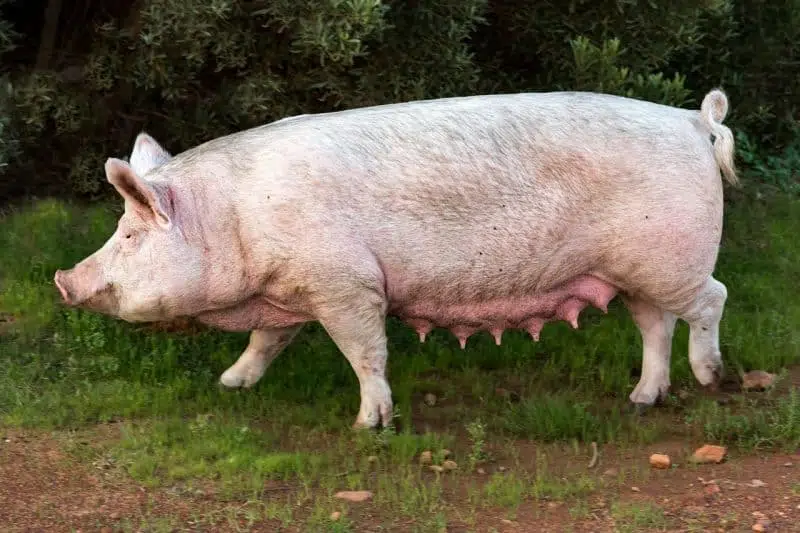Welcome to Animal Rights Violation Issues in The United States.
Do animals have rights? This is the contentious philosophical question that divides proponents of the animal rights movement and those on the other side of the spectrum who believe animals have just about the same right as inanimate objects and our species can use them as we, please.
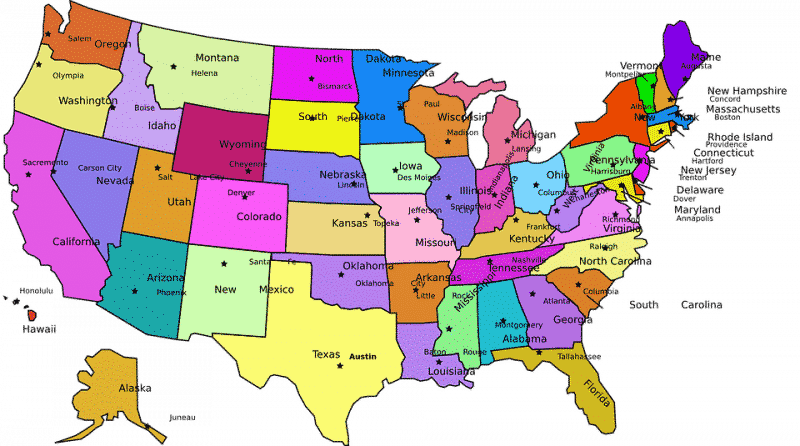
The idea of ascribing rights to animals has long been controversial for much of its existence. Still, when you take an in-depth look into the reasoning behind this ideology, you’ll find that the ideas behind this philosophy aren’t all that radical.
Therefore, animal rights advocates attempt to create a distinction between animals and inanimate objects, as they are often considered by industries exploiting them. Whether or not animals have rights should be deduced from the definition of “Animal Rights.
Jump to any section or read the entire article:
What Are Animal Rights?
Animal rights are moral principles ingrained in the belief that animals not belonging to the species homo sapiens deserve the freedom to live as they wish without being subject to the whims and desires of human beings.
When you take a look at this, the basic concept does not stray far from the articles of freedom enshrined in the constitution of democracies of the world, such as the freedom of expression, right to life and personal liberty, and freedom from slavery and forces labor [or in the case of animals, torture].
This is not to say that animal rights advocates for equal rights for animals and humans; this would be impractical or, at best unenforceable. Animal rights aim to safeguard the basic tenets and principles that hold; in the grand scheme of things, every life is worth something.
Recently, scientists discovered that the same signaling molecule [the Nodal homolog, encoded by the NODAL gene] that gives the snail, a mollusk, its lopsided coiling shell also plays a key role in our early embryonic development and is crucial to our interior asymmetry. If we ever needed a reminder that all life is our kin, this is one phenomenon we can’t look past.
Issues Surrounding Animal Rights
Much of the current opposition to the philosophical position held by animal rights advocates in the United States is being fueled by large institutions and corporate bodies that benefit from the abuse and exploitation of animals, such as the cosmetics and pharmaceutical industry.
For example, most companies believe that animals have no inherent legal or moral rights as humans do. This would imply that the unethical use of animals for purposes such as clothing, recreation, or research should not be regulated by law or seen as a punishable offense.
In this light, you can see the daunting obstacles that stand in the way of passing enforceable laws that contain animal abuse.
In no particular order, here is a list of the top animal rights violation issues facing animals in the United States. These are based on their effect on animals, the number of animals affected, and the number of people involved.
#1 Factory Farming

Factory farming is an agricultural technique invented by scientists in the 1960s to maximize efficacy and production so that farms could meet the demand for meat and other livestock among a burgeoning population. The methods are so focused on increasing efficiency and quantity that animal welfare is often ignored.
On factory farms, chickens can be found packed into cages not even large enough for their wingspan; baby calves are taken away from their mothers before lactation is even at its peak and confined in crates so compact they can’t move. Grazing animals are fed only on cheap grain and injected with hormones to fatten them, and farmers cut off chickens’ beaks so they don’t peck each other to death.
Unfortunately, the evils of this mode of farming don’t end here. The methane produced by cows reared in these farms has a more considerable impact on the ecosystem as they are a significant factor contributing to climate change.
Indeed, these farming methods are not only objectionable but cruel and archaic. You can help reduce the impact of these contemptuous animal rights abuses by buying only organic free-range eggs and chickens. Or by eating more veggies and less meat. If you must eat meat, avoid store-bought meat and try to buy your heart from a farmer’s market.
#2 Irresponsible Dog Breeding [Puppy Mills]

A puppy mill is a term that may be familiar to you. It refers to a facility that engages in breeding a high volume of new puppies for the sole purpose of turning a profit. After that, their breeders often give these pups and their mothers very little care. And they are then sold through avenues like pet stores and Internet auctions.
On the other hand, many dog breeders out there breed dogs appropriately. But dog breeding has a dark side, especially for expensive, desirable, and exotic breeds. Poor breeders not only ignore the well-being of the animals in their care. But they also supply industries notorious for endangering animal practices, such as online adoption agencies and pet stores.
Additionally, animals from these sketchy breeders often carry a variety of veterinary problems you don’t encounter in properly bred dogs. That’s because they are not adequately taken care of.
Suppose you would like to support the puppies bred in these horrible conditions. In that case, you can influence this process by encouraging family and friends only to adopt puppies from rescue homes and dog shelters. With a quarter of shelter animals registered as purebreds, the chances that you’ll find a furry friend at your local rescue is pretty high.
If you are a dog lover and want to support sustainable breeds, look at our article on the top 10 dog breeds for beginners.
#3 Animal Experimentation and Testing
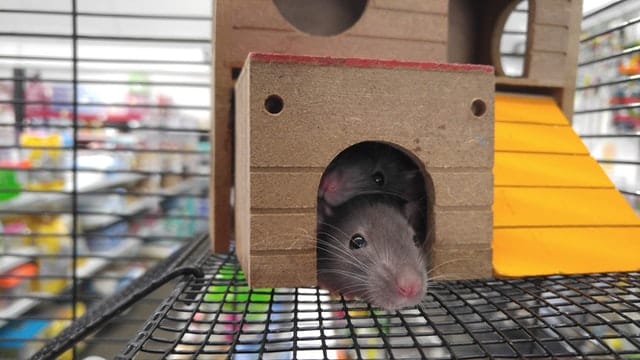
Animal testing and experimentation are an aspect of animal rights that has long been disputed. Even at that, animal testing still is an effective practice in many laboratories across the United States.
Millions of mammalian species, such as rats, mice, rabbits, monkeys, and even non-mammalian animals, are kept in barren cages in a sterile testing environment with a minimal social environment. No interaction is allowed with them beyond being experimented on.
The medical and cosmetics industries are notable culprits of this nature of animal abuse. In addition to the thousands of animals being tested with drugs by medical and pharmaceutical companies [which can be argued as being “for the greater good”], the cosmetics industry alone uses over 500,000 animals in cosmetics tests yearly. This is even though over 250 companies and 39 countries have banned this cruel practice and endorsed the Humane Cosmetics Act.
In the United States, animals used in lab testing are protected by the Animal Welfare Act of 1996. But these laws are not enacted enough. Many experimenting labs still get away with keeping animals in horrible conditions subjecting them to abusive experiences in the name of innovation.
Even though many argue that animal testing is crucial in producing and formulating life-saving medicines and therapies, many experiments on animals entail needless suffering and are unrelated to improving human welfare.
You can help the plight of animals being experimented on by refusing to use products such as cosmetics that have been animal tested. Moreover, many great companies have never needed to test their products on animals. And some have realized the error of their ways and abolished the process altogether.
#4 Blood Sports [Dog Fighting/Cock Fighting]
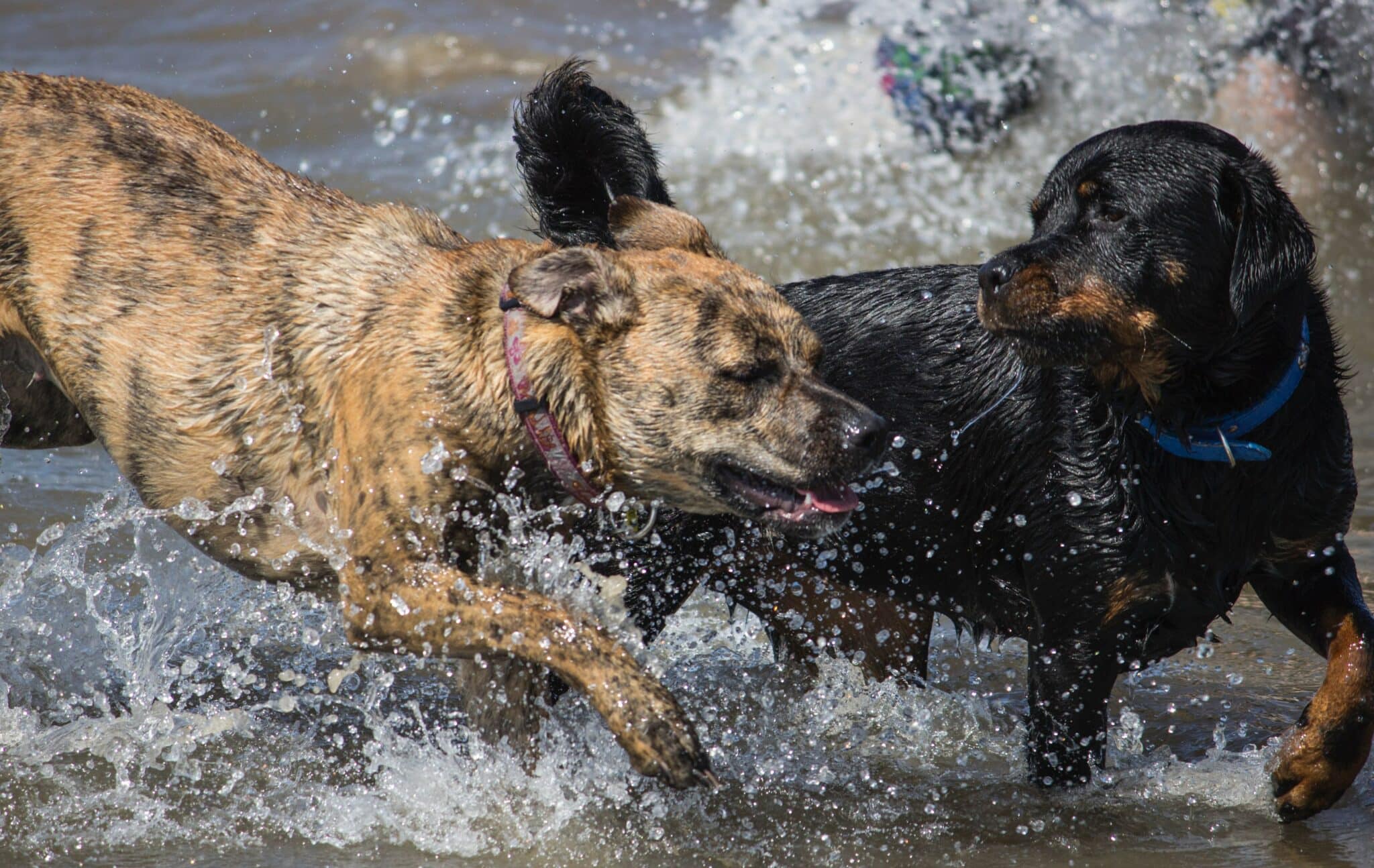
Blood sports are a kind of ‘sport’ or entertainment that involves animal bloodshed. Unfortunately, these inhumane sports continue to thrive. And are kept alive by individuals who feel no remorse for harming animals for profit.
In addition, this dangerous type of animal entertainment is perpetrated by criminal gangs. And it can be linked to other criminal activities such as illegal gambling, drug trade, and firearm trade.
As the name implies, dog fighting is a sport where dogs are specially bred, trained, and conditioned to be thrown into a fighting pit. They are encouraged to attack each other for hours until one or both dogs are injured. Or worse, get killed and can no longer continue.
Moreover, these dogs are trained to be highly aggressive toward each other. When they eventually get injured, they do not receive proper veterinary care for fear of being reported to the authorities. Home remedies are prescribed to them that do nothing to heal their wounds in time.
Some of the inhumane practices the dogs face include:
- Being beaten and starved increases aggression.
- Injection with steroids or cocaine to ‘enhance’ performance.
- Being forced to wear electric shock collars.
- Being kept in isolated environments and not allowed to run or play around.
- Being used as bait dogs [, this is mainly reserved for the dogs who don’t cut ‘fighters.’ Their mouths are tied shut so they can’t fight back and are used as sparring partners for the fighters.
Likewise, cock fighting follows the same kind of approach. Roosters are placed in an enclosed space and spurred on to fight. Increasing animal aggression is a central theme here also, and the brutal ways this is achieved include:
- Keeping birds in small cramped wire cages.
- Riling up boosters by pulling their beaks and feathers before a fight.
- Cutting off a rooster’s wattles and combs so the opposing bird won’t attack these body parts.
- Cutting off a rooster’s natural spurs and replacing them with metal spurs.
In many cases, the animals involved in the fights die immediately, and even the winners die soon after from their injuries because of a lack of proper care. Furthermore, the winners that do not pass are allowed just enough time to recuperate, only to be thrown into the pit again. It is an endless vicious cycle, and the animals can’t win; they all end up dead or damaged for life.
#5 Trophy Hunting and Poaching

Trophy hunting is where hunters are merely interested in killing animals for their parts, known as ‘trophies,’ rather than any need for food. Afterward, prominent features of the animal are preserved and displayed as paraphernalia. Animals in the wild such as deer, elks, elephants, and wildcats, are the most affected by these gruesome practices.
Similarly, poaching, summarized as trophy hunting without a license, also poses a considerable problem. Although, in the United States, laws have been enacted to eradicate the market for the products poachers usually covet, such as ivory, gotten from the horns and tusks of killed animals such as hippos, elephants, and rhinos. In Africa and Asia, however, there is still a booming market for these products.
Thousands of wild animals are killed yearly by gun-toting figures who often use cruel and unfair methods like bear traps to hunt these animals. These controversial practices continue despite these exotic species’ declining status because of the large sums of money the perpetrators tend to earn from selling these animal parts.
Take, for instance, the case of the Ivory trade. Ivory is so valued because of its use in making various items such as jewelry, dominoes, and piano keys. While recently, a progressive vote has been passed to prevent the reopening of the ivory trade, animals that possess this valued product as part of their biology are still being killed by their thousands yearly.
#6 Indiscriminate Fishing Practices
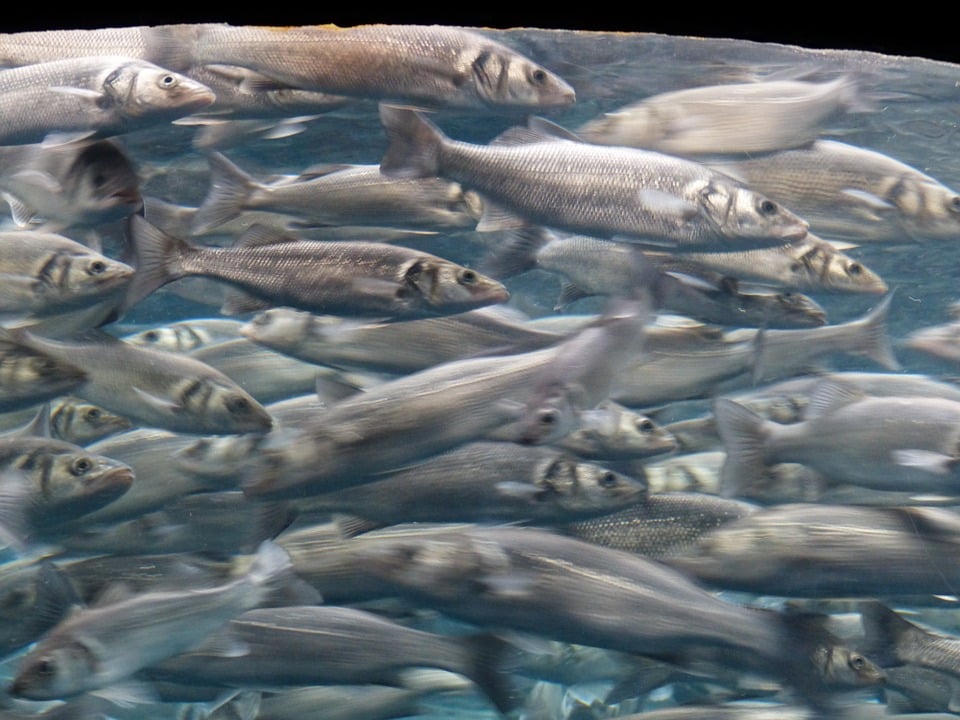
Commercial fishing is animal cruelty on a massive scale, killing almost a trillion animals every year. Fishing practices such as longlining and dragnet fishing are used on commercial fishing ships, some the size of an average football field.
In longlining, lines up to 50 miles are attached to thousands of baited hooks and unreeled into the sea, which can lead to the death of many marine species, including those that do not serve any purpose whatsoever, such as turtles and sea birds.
In the same vein, Dragnet fishing uses gill nets that are miles long to create large walls of nets that fish cannot see. Fishes and other types of marine life, like turtles, dolphins, and whales, inadvertently swim into them, and many will bleed or suffocate to death.
In the United States, the Humane Slaughter Act does not cover many marine species; as a result, various cruel slaughter methods are constantly being reinvented as the industries and companies using this marine life see fit.
For example, fish are usually removed from the water and allowed to die by suffocation. Consequently, their gills collapse in their desperate attempt to escape, preventing them from breathing. Similarly, larger marine animals like tuna are usually clubbed to death. Often these animals may be injured but retain consciousness, and the process is repeated until they die.
Furthermore, whaling is also a fishing practice that human rights advocates should bring to public attention. Even with the endangered category of these large mammals, they are still constantly being hunted for their usable parts, such as meat and fat. An unfortunate aspect of this practice is that many of their features are left unused and thrown back into the sea because of their mammoth-sized nature.
#7 Climate Change

Climate change is a looming issue affecting all organisms, including our species, even though humans are the number one culprit accelerating this animal rights issue. Ice caps are melting; sea levels are rising, crops are constantly threatened by drought, and the diverse array of forms in which this global issue increasingly threatens animal habitats and survival is alarming.
The list of animals at risk, from the Arctic Pole to the Amazon to the coral reefs below the ocean, grows daily. A majority of the animals most at risk are endangered species, and they will soon be wiped out if something isn’t done about this situation urgently. They include species like the polar bear, elephants, giant pandas, orangutans, and monarch butterflies.
In addition, the melting of the Arctic packs, home to penguins and polar bears, and deforestation of the world’s most important ecosystems, such as the Amazon forest, has contributed significantly to the extinction and loss of habitat of many animal species.
To sum up, this issue can be lessened by using fewer fossil fuels and fewer emissions of greenhouse gases through the use of pure energy.
#8 Deforestation And Urban Sprawling

The human population threatens the rights of both domestic and wild animals more than we would like to admit. Environmental groups have forecasted that urban sprawling is devouring open spaces in rural and metropolitan areas so quickly that it could spell extinction for nearly 1000 species of animals.
Also, the more the population of humans gathered in a particular area, the more the animal use, abuse, displacement, and death rate.
The bottom line is a lot of these species are at risk of extinction due to urban sprawling [construction of homes, offices, roads, and farm fields], the leading cause of animal habitat destruction.
#9 Animal Sports and Entertainment

Animal sports entail legal activities like horse racing, greyhound racing, rodeos, and marine animal displays. And illegal activities like blood sports. Animals are often exploited for entertainment in these industries by being coerced to perform roles forced upon them. Sometimes under the threat of physical suffering if they don’t act as their owners wish. These animals are often treated as chattels. And where there is potential for profit to be made, animal abuse becomes more rampant.
Although public perception of these sports has been increasingly hostile, this hasn’t stopped these businesses from running and flourishing.
#10 The Property Status of Animals

Number 10 on the list of Animal Rights Violation Issues in The United States. Animals serve many purposes besides being seen as food or game, providing companionship and security, and guarding our households.
For instance, on the battlefield, dogs sniff out bombs and take bullets for their soldiers—and generally alert soldiers to impending danger, saving the lives of thousands of service members.
Most animal abuse stems from treating animals as human property for use in any form or manner, no matter how trivial, for human purposes. Indeed, animals can benefit from a change in this perception of them as property.
Furthermore, we could initiate this process by referring to these domestic companions as ‘companion animals’ instead of pets and their proprietors as ‘guardians’ instead of owners.
How You Can Help on Animal Rights Violation Issues in The United States
It can be daunting to take on the issues of animal rights and abuse. Several issues concerning animal rights are equivocal and evolutionary, with laws changing daily on a state and federal level. Suppose you’d like to support their cause.
In that case, you can choose a few issues you are most passionate about. Find activists who share your concerns, and try to influence legislation surrounding animal rights in your locality.
You might also like reading about the Top 10 Most Endangered Animals in the United States.
Join our Forum for free today!

- These are The 5 Largest Great White Sharks Ever Recorded - July 19, 2024
- The Surprising Benefits of Big Game Hunting - July 18, 2024
- $100k+ Hunting Experiences The Most Expensive Animals to Pursue - July 17, 2024

